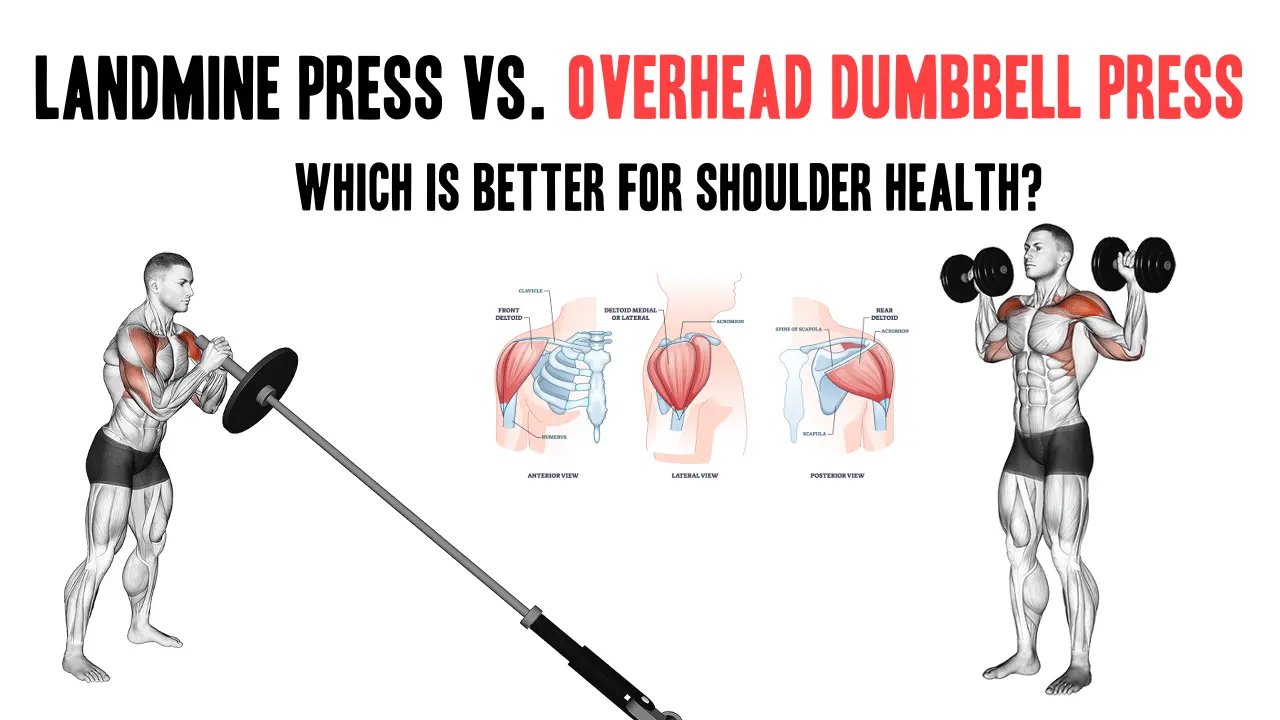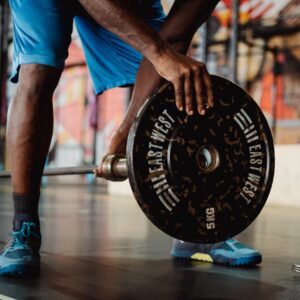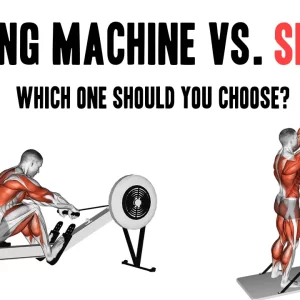Contents
Shoulder injuries are among the most common issues encountered in both athletic and general fitness populations, often resulting from poor movement mechanics, overuse, or insufficient joint control. Two popular overhead pressing variations—the landmine press and the overhead dumbbell press—are frequently recommended for developing shoulder strength and stability. However, the question remains: which of these two exercises is safer and more effective for promoting long-term shoulder health?
This article explores the anatomical and biomechanical differences between these pressing variations and how they influence factors such as joint loading, scapular movement, core stabilization, and risk of impingement.
Overhead Dumbbell Press: Classic Movement with Greater Mobility Demands
The overhead dumbbell press is a traditional free-weight movement in which two dumbbells are pressed vertically from shoulder height to an overhead position, typically while standing or seated. This exercise is highly effective at targeting the deltoids, triceps, and upper trapezius, but it also places significant demands on shoulder mobility and thoracic spine extension.
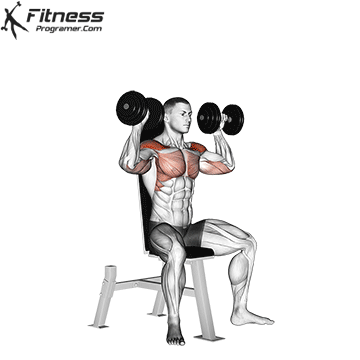
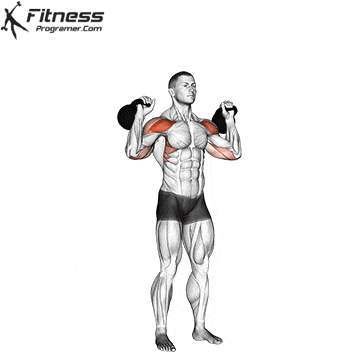
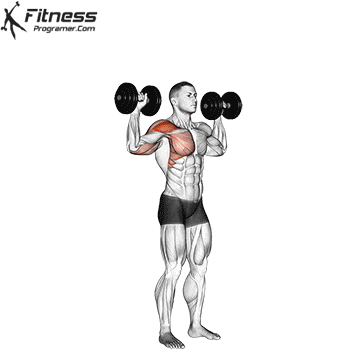
Advantages:
- Promotes symmetrical development by working each arm independently
- Enhances shoulder proprioception and joint stability
- Allows for greater range of motion, potentially enhancing hypertrophy in the deltoids
Shoulder Health Considerations:
While effective for muscular development, the overhead dumbbell press requires full shoulder flexion, scapular upward rotation, and thoracic extension to execute properly. Individuals with shoulder impingement, limited overhead mobility, or anterior instability may struggle to perform this exercise safely. The vertical path of the dumbbell can also place the rotator cuff and subacromial space at risk when form is compromised.
Landmine Press: Joint-Friendly Alternative with Scapular Freedom
The landmine press involves pressing a barbell anchored at one end in an arcing, upward-forward motion. Often performed from a half-kneeling or standing position, this movement has gained popularity for its joint-friendly trajectory, core activation, and adaptability for a wide range of populations, including those undergoing shoulder rehabilitation.
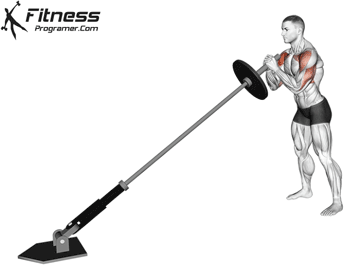
Advantages:
- Reduces compressive forces in the glenohumeral joint
- Encourages scapular upward rotation and protraction, improving shoulder kinematics
- Safer for individuals with restricted overhead mobility
- Requires strong core engagement due to the angled load and anti-rotational demands
Shoulder Health Considerations:
The landmine press’s diagonal pressing path significantly reduces the risk of mechanical impingement by avoiding full shoulder flexion. This exercise allows for more natural scapulohumeral rhythm, which is especially beneficial in preventing overuse injuries in the rotator cuff and biceps tendon. Additionally, the landmine setup facilitates gradual load progression and positional regression, making it ideal for both early-stage rehab and long-term performance training.
Biomechanical Differences
| Feature | Overhead Dumbbell Press | Landmine Press |
|---|---|---|
| Arc of Motion | Vertical | Angled (upward and forward at ~45 degrees) |
| Scapular Freedom | May be restricted in poor thoracic posture | Naturally allows upward rotation and protraction |
| Thoracic Spine Demand | High (requires extension) | Moderate |
| Rotator Cuff Stress | Moderate to High | Low to Moderate |
| Core Involvement | Moderate | High (especially anti-rotation in half-kneeling) |
| Best For | Strength, hypertrophy with good mobility | Shoulder rehab, injury prevention, core control |
Which Is Safer for the Shoulder Joint?
The landmine press is widely regarded as the safer option for individuals dealing with existing shoulder issues or lacking sufficient mobility to press overhead with proper mechanics. Its angled path of motion prevents the shoulder from moving into potentially impinged positions while still allowing for productive muscle engagement and overhead force development. Additionally, the reduced requirement for thoracic extension makes it accessible for individuals with posture-related limitations.
In contrast, the overhead dumbbell press is best suited for individuals with healthy, mobile shoulders who can safely access a full overhead position without compensation. Although it remains an excellent tool for building pressing strength and deltoid mass, it may increase injury risk if performed with poor form or when mobility limitations exist.
Core Involvement and Functional Transfer
An often-overlooked component of pressing movements is core activation. The landmine press, particularly in the half-kneeling stance, requires significant engagement of the obliques, rectus abdominis, and gluteal muscles to stabilize the torso and prevent rotation. This makes it a valuable tool for enhancing functional shoulder stability through integrated movement patterns.
The overhead dumbbell press also recruits core musculature, especially when performed standing, but the symmetrical bilateral loading often minimizes the anti-rotational demand seen in the landmine variation.
Conclusion
Both the landmine press and overhead dumbbell press offer valuable benefits for shoulder development, but they serve slightly different roles in maintaining and improving shoulder health. The landmine press provides a safer, more accessible option for individuals with mobility limitations or injury history, making it an ideal choice for rehabilitation, prehabilitation, and foundational strength.
In contrast, the overhead dumbbell press remains a highly effective hypertrophy tool for the shoulders, but it requires proper form and overhead mobility to avoid impingement risk. Ideally, these movements can be used in tandem to reinforce safe pressing mechanics, balance mobility and strength, and promote long-term shoulder integrity.
References
- Ludewig, P. M., & Cook, T. M. (2000). Alterations in shoulder kinematics and associated muscle activity in people with symptoms of shoulder impingement. Physical Therapy, 80(3), 276–291.
- Reinold, M. M., et al. (2004). Current concepts in the evaluation and treatment of the shoulder in overhead-throwing athletes. Journal of Orthopaedic & Sports Physical Therapy, 34(2), 61–79.
- Ebben, W. P., & Blackard, D. O. (2001). Strength and conditioning practices of National Football League strength and conditioning coaches. Journal of Strength and Conditioning Research, 15(1), 48–58.

